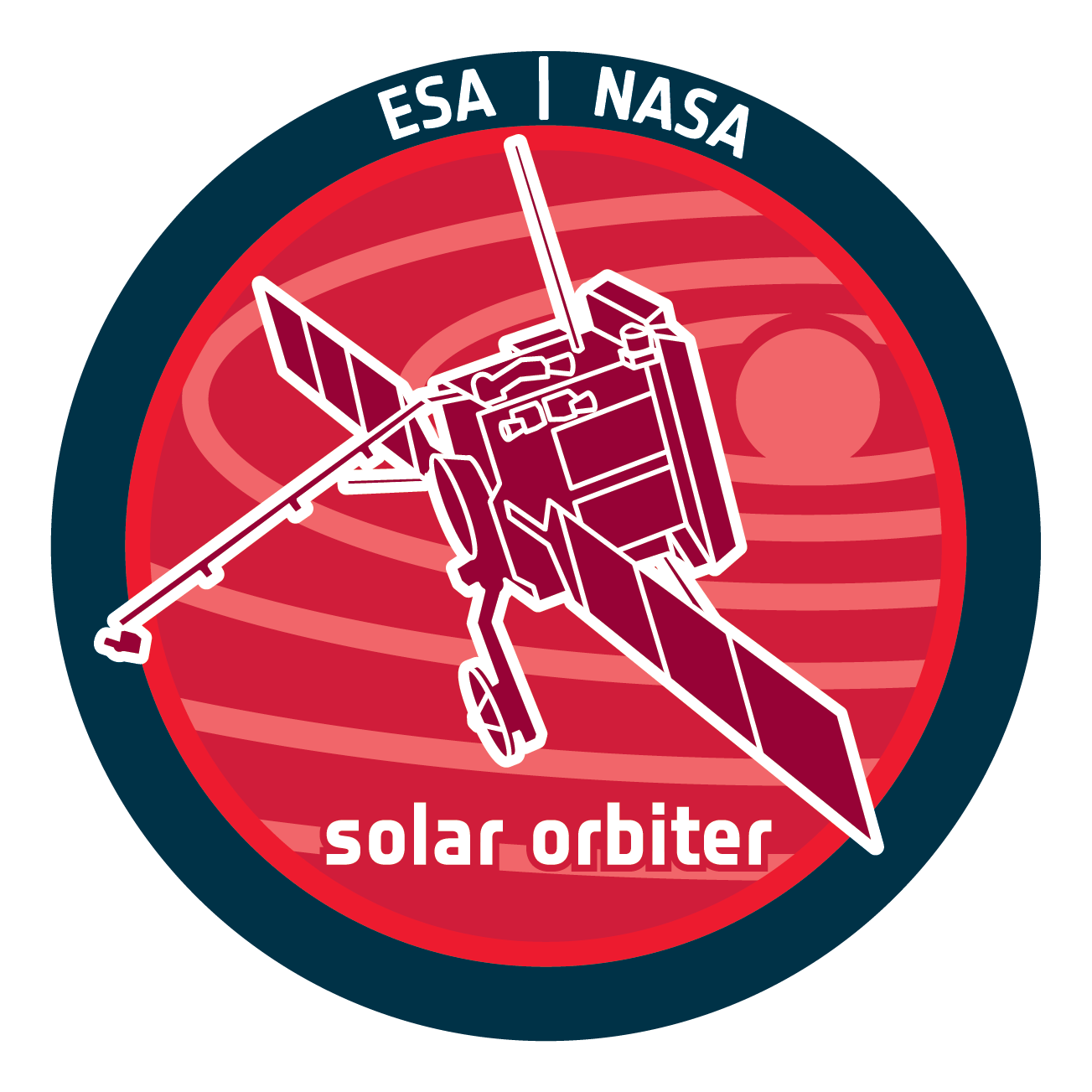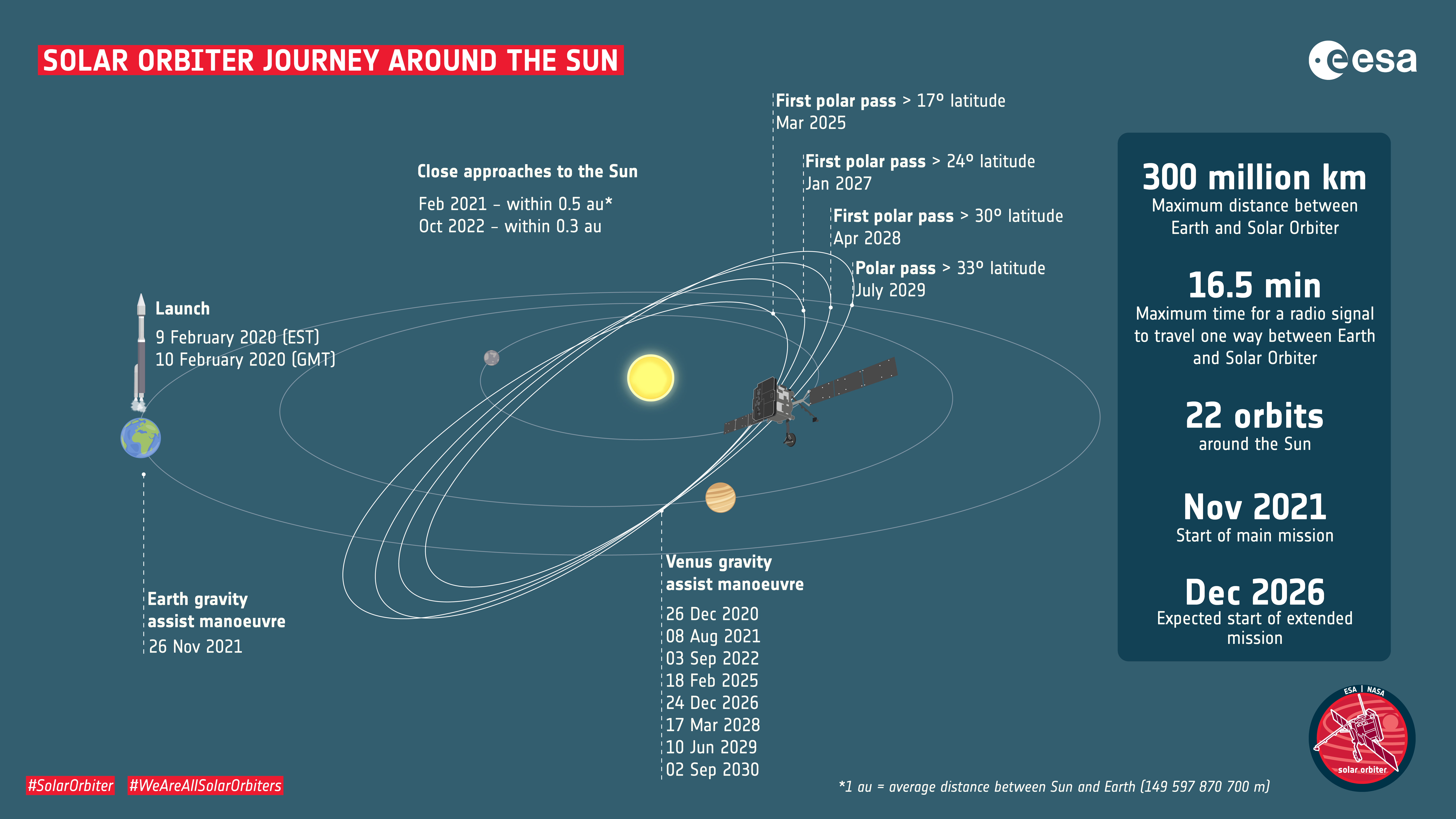Solar Orbiter mission
Solar Orbiter is the first mission of the scientific program of the European Space Agency (ESA) Cosmic Vision 2015-2025, successfully launched on February 10th, 2020. For the first time Solar Orbiter will make it possible to study the Sun from inside 0.28 AU (1 AU is the Sun-Earth distance) and provide observations of the Sun’s polar regions out of the ecliptic.

ESA Solar Orbiter’s logo (courtesy of ESA)
Why Solar Orbiter?
We live in the extended atmosphere of the Sun, a region of space known as the heliosphere. The mission goal is to investigate the link between the Sun and the heliosphere. This is crucial to us since, being immersed in an ambient of plasma and particles emanating from the Sun, we are exposed to all perturbations induced by solar activity.
From the astrophysics point of view, understanding how the Sun creates and controls the heliosphere is of fundamental importance to address one of the major scientific questions we are faced with: how does the solar system work?
From the physics point of view, the heliosphere represents a uniquely accessible domain of space where fundamental physical processes common to astrophysical and laboratory plasma can be studied under conditions impossible to reproduce on Earth or to study from astronomical distances.(1)
Solar Orbiter is the first step of the ESA Cosmic Vision 2015–2025 scientific program. The mission goal is to explore the uncharted regions of the Sun and heliosphere, the solar poles and the out of the ecliptic inner heliosphere, with a combination of in-situ plasma analyzers, in order to probe the physical conditions of the interplanetary space close to the Sun, and remote-sensing telescopes apt to gather the solar light in a band from the visible to X-rays. The spacecraft will also fly in near-synchronization with the Sun’s rotation, thus allowing long term observations of the solar corona at the limb.
The ESA scientific program, Horizon 2000, was also opened in 1995 by a solar mission: SOHO, a large observatory inserted in orbit at the Lagrangian point L1, at 1.5 million kilometers from Earth, where the Sun never sets. A very successful mission, SOHO is still monitoring the Sun after more than two solar cycles of scientific operations.
Solar Orbiter journey

The interactive ‘Where is Solar Orbiter?’ tool provided by ESA allows to explore the mission’s trajectory including the gravity-assist flybys and follow the position of the spacecraft every single day of its journey.
1 ESA - Solar Orbiter Assessment Study Report (SRE-2009-5; December 2009)